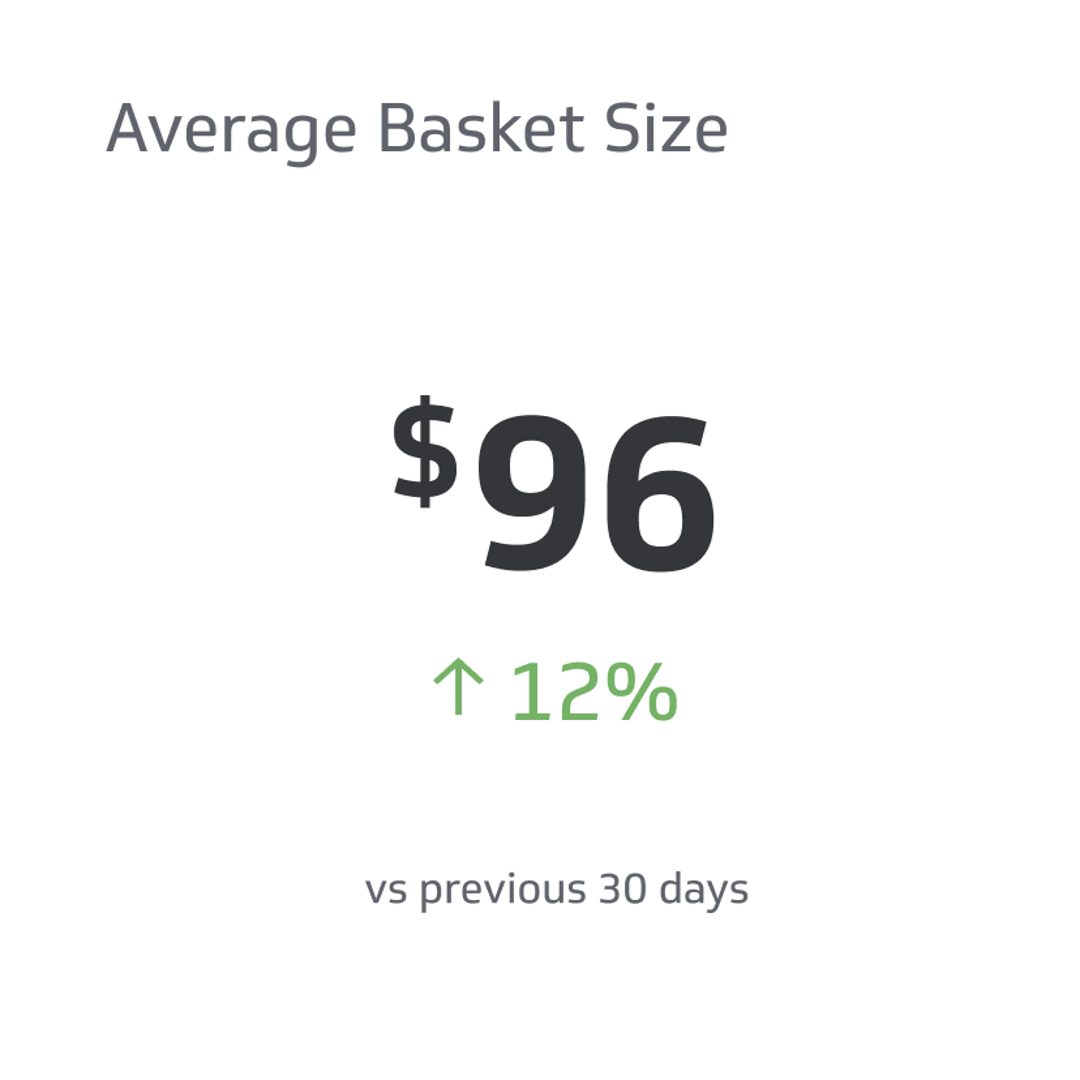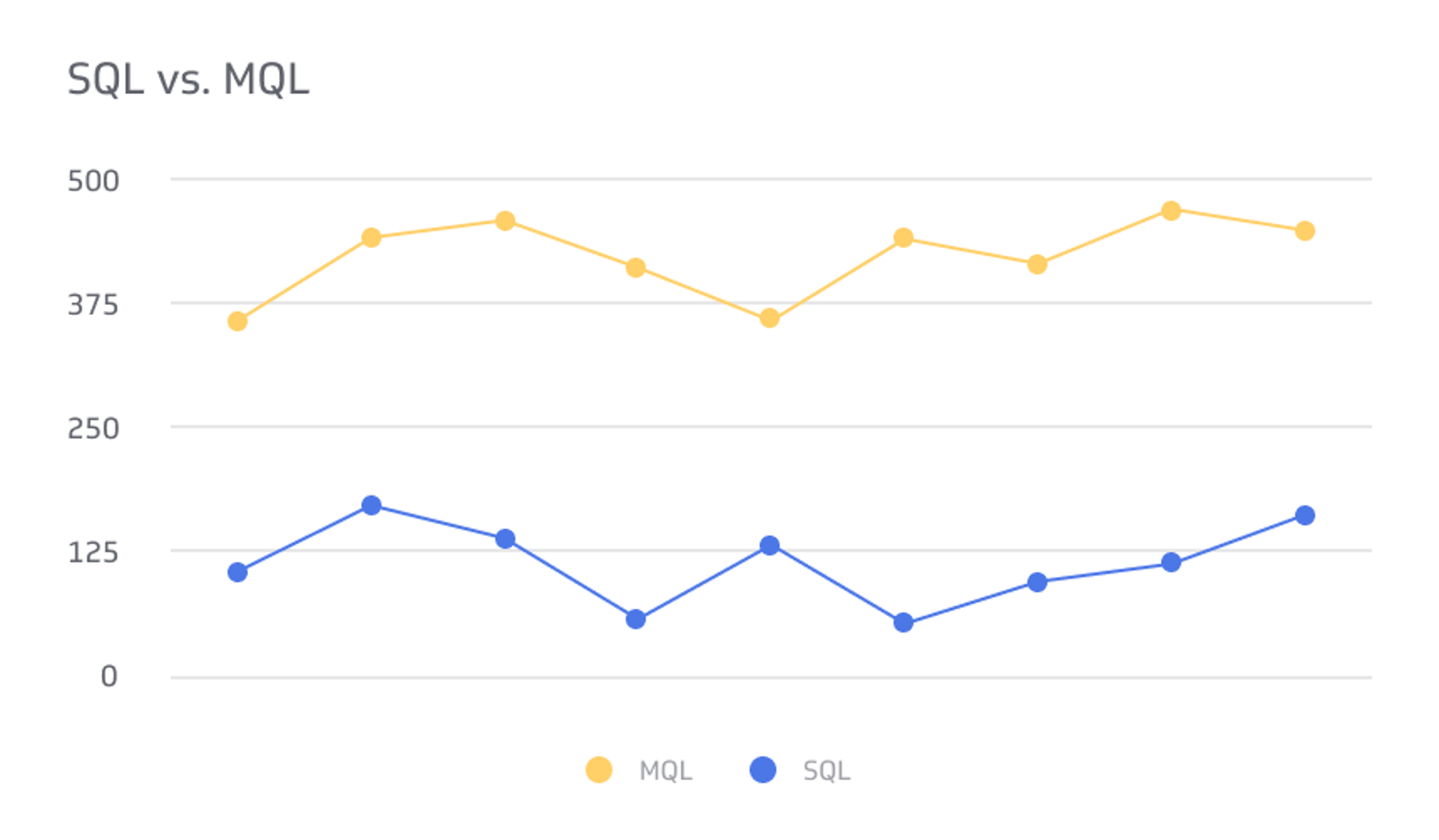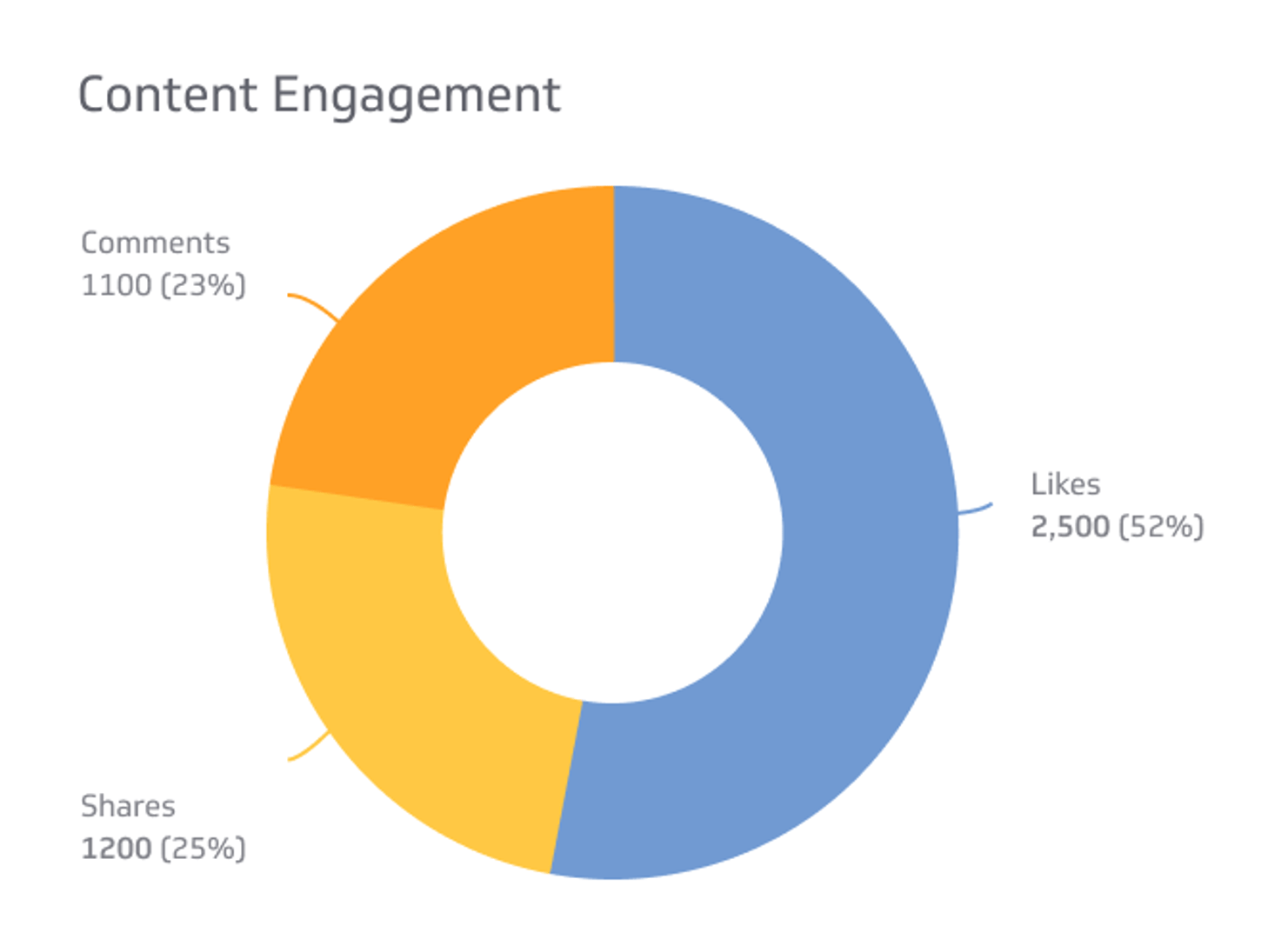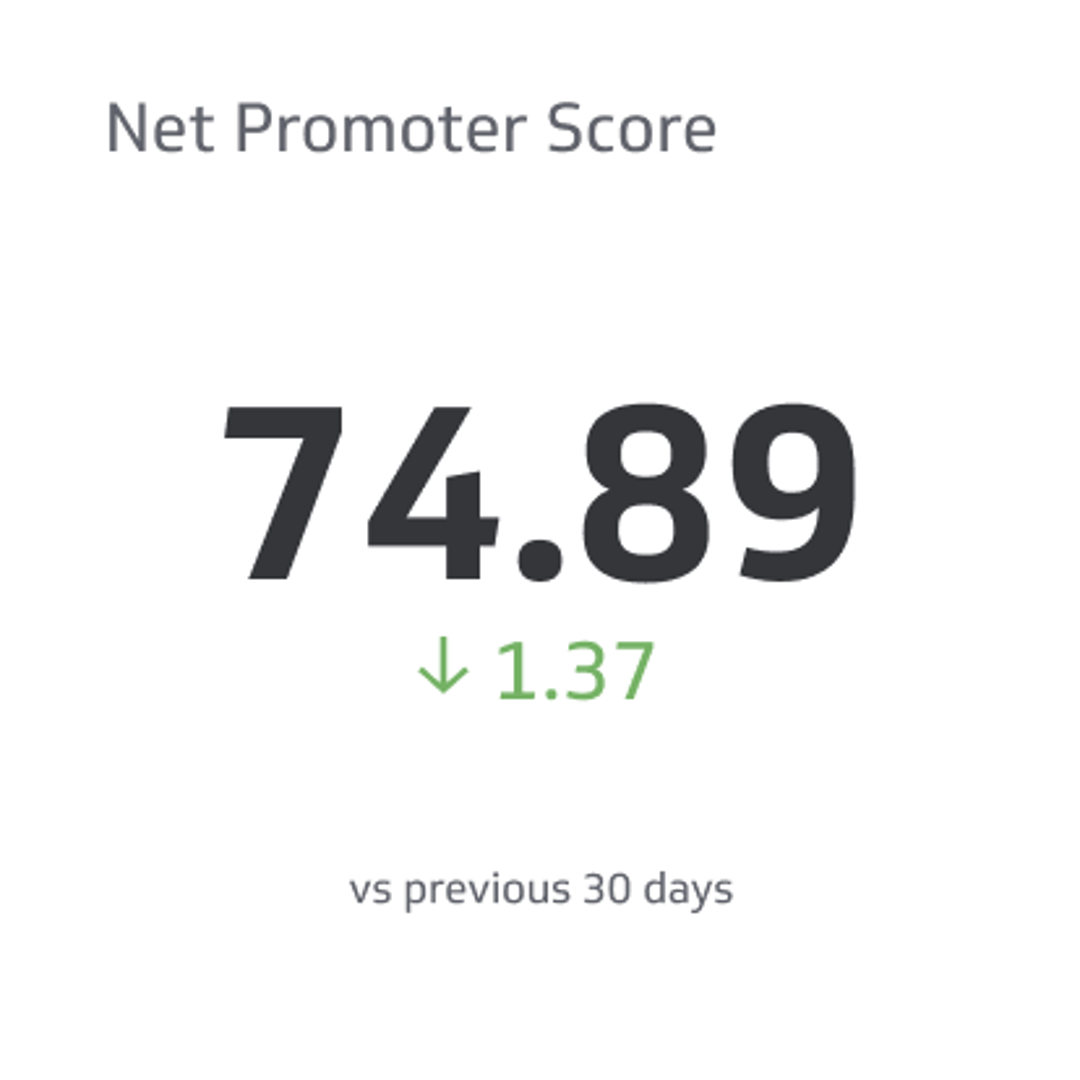Average Time on Page
Track all your Digital Marketing KPIs in one place
Sign up for free and start making decisions for your business with confidence.

What is Average Time on Page?
Average Time on Page is a metric that website owners and marketers use to track the engagement of their visitors. Furthermore, it measures the average time users spend on a specific page before moving on to another one.
As a business owner, we're sure you know drawing users to your website is crucial. However, it's also vital to keep them engaged once they're on your site. Measure and improve your average time on page, and start getting your business's website on track to success.
Why Is Average Time on Page Important?
A high time spent on a page is generally a good thing. It indicates that users are finding your website's content valuable and engaging. However, it's important to remember that there is no one-size-fits-all answer to what constitutes a "good" time spent on a page. The ideal duration spent on the page will vary depending on the type of content you're offering and the goals of your website.
For example, if you're running an e-commerce website, you'll want visitors to spend enough time on your product pages to learn about the products and decide whether or not to buy them. However, you don't want them to spend so much time on your product pages that they forget what they were looking for in the first place.
On the other hand, if you're running a blog for your business, you may want visitors to spend more time reading your articles. A higher time spent will help you to increase your website's traffic and engagement, and it may also lead to more people subscribing to your blog or following your business on social media.
Conclusively, a business owner must know their consumer's average time on page.
Is Average Time on Page the Same As Session Duration?
Time on page and session duration are two measurements that website owners and marketers use to track the engagement of their visitors. However, it is crucial to understand that these two metrics are not identical regarding average time on page.
By understanding the difference between the time on the page and session duration, you, the business owner, can get a better complete picture of how users engage with your websites.
Average time on page measures the average time users spend on a specific page before moving on to another one. However, session duration measures the total time users spend on a website in a single visit.
A user can have a high time on a page but a low session duration or vice versa. For example, a user might spend a long time reading a blog post but then leave the website without visiting other pages. Conversely, a user might check out several pages on a website in a short period, each for a short time.
What Is the Right Time on Page?
The right time on the page varies depending on the type of website and the content viewers are looking at. For example, a blog post might have a higher time on the page than a product page since users may spend more time reading a blog post than comparing products.
A high time on the page is generally better than a low time, as a higher time suggests users found your content valuable and engaging. We recommend you aim for at least 60 seconds on the page, but it depends on your industry, how much content you have, and your goals.
If you're concerned about your website's average time on page, you can use analytical tools to track this metric and see how it compares to other websites in your industry.
How To Increase Average Time on Page
Average time spent on a page is a valuable digital marketing metric that can help you to improve your website in several ways. Therefore, it's best to use average time on page to your advantage to drive traffic to your website.
If you're looking to increase the time spent on a page on your website, there are several things you can do. Below, we'll share a few tips for improving your website and getting you to the right time on the page.
Henceforth, follow these recommendations, and you can increase the average time spent on page on your business's website and improve the overall user experience.
Create high-quality content
Creating high-quality content is one of the best ways to increase time spent on page. When users find your content to be informative, engaging, and well-written, they are more likely to spend time reading it.
Hire skilled, adept writers to create your content, and proofread their work carefully before publishing. Alternatively, you can write your content yourself.
Do your research and write about topics you are passionate about, or find someone who is. Use clear and concise language, and break up your text with headings, subheadings, and images.
Finally, use multimedia to enhance your content, a tip we'll discuss more thoroughly later.
By following these tips, you can create high-quality content that will keep users returning for more.
Organize your content
Make sure your content is well-organized and easy to read. Use clear and concise language, and break up your text with headings, subheadings, and images.
Too many subheadings and bold letters can cause users to skim and leave the site quickly, so stay conservative with your headings.
However, breaking up large paragraphs and using a reasonable amount of headings can enhance your time on page and drive more traffic to your website.
Use visuals
Don't forget to use visuals to enhance your content. Just because it's business content doesn't mean it has to be boring!
Images, videos, and infographics can help to break up your text and make your content more visually appealing.
Whether you're writing a blog post, informative article, or advertisement, you can add multimedia and help the reader have a more engaging experience.
Make your pages more absorbing by adding moving media like videos and gifs. We recommend sticking with internal videos so readers don't leave your site.
Use a professional website builder
Nobody wants to spend time on a visually unappealing website. However, creating a professional website from scratch can feel overwhelming or too time-intensive.
Consider investing in a website builder and make your site more polished. Appearances are key when increasing time on a page, and a website builder can create a visually stunning and engaging page.
With a professional website builder, you can use pre-made templates and drag-and-drop tools to create a website without coding experience.
Take advantage of social media
Social media is a powerful tool that you can use to drive traffic to your website and increase time spent on the page.
When you share links to your website on social media, you can reach a wider audience and encourage people to visit your site.
In addition, your business can use social media to create a community around your website. When you interact with your followers on social media, you can build relationships and encourage them to return to your website for more content.
Run A/B tests on your website
A/B testing is a great way to see what changes you can make to your website to improve time spent on page. For example, you can test different headlines, images, and call-to-action buttons to see what gets the best results.
A/B testing compares website versions to see which one performs better. By running A/B tests, you can make data-driven decisions about how to improve your website.
The testing can help you increase time spent on page and improve the overall user experience.
Identify pages that need improvement
If you notice that certain pages on your website have a low time spent on page, this is a sign that users are not finding these pages valuable or engaging.
You can use this information to identify pages needing improvement, such as adding more content, improving the design, or fixing any technical issues.
Track the effectiveness of your marketing campaigns
Time spent on page can be a helpful metric for tracking the effectiveness of your marketing campaigns.
For example, you can track the time spent on page for visitors who visit your website from different sources, such as organic search, paid advertising, or social media.
This information can help you to determine which marketing channels are most effective at driving traffic to your website and increasing engagement.
Keep your pages loading quickly
No one wants to wait for a page to load, so optimize your pages for speed and increase time spent on page. When pages load slowly, users are more likely to click away, which can lead to lost traffic and sales.
Fortunately, you can increase your website's loading speed in several easy ways.
Optimize your images so they will load quickly, host your website on a fast server, and minify your CSS and JavaScript to keep the website speedy.
Optimize your website for search engines
Time spent on page is a ranking factor in Google's search algorithm. This factor means that pages with a high average time on page are more likely to rank higher in search results.
Use keywords that people might search for in your articles. You can improve your website's visibility in search results and attract more visitors.
Use internal linking
Internal linking is a great way to improve time spent on page by encouraging users to explore your website.
When you link to other pages on your website, you are keeping readers on your site. External links encourage visitors to explore elsewhere.
Place links throughout your content, not just at the beginning or end, and use descriptive anchor text to encourage users to click on the link. Also, make sure that the links are relevant to the content on the page.
Keep content relevant
Writing relevant content for your readers helps keep them from scanning or leaving the site. Users are more likely to read it and spend time on the page when users find content relevant to their interests.
Relevant content can help you attract more visitors to your website. When users find your content relevant and helpful, they may share it with their friends and colleagues, attracting new visitors to your website.
Writing relevant content can also improve your search engine keyword ranking. Search engines rank websites based on several factors, including the relevance of the content.
Use fewer ads
Decrease ads on your website and see your average time spent on page soar. Too many ads can be distracting and annoying for users, and when users get bombarded with ads, they are less likely to focus on the content of your website.
A large number of ads can also slow down the loading of your website. Therefore, a slower loading speed can lead to users clicking away before they can see your content.
Write easily readable content
Write easy-to-read content to keep readers engaged. Website viewers are looking for quick, scannable answers, and engaging content can help them stay longer.
Readable content is more likely to be read and understood by users. Users are more likely to spend time on your website when they can comprehend your writing well. They are also more likely to share your content with others, which can help you to attract new visitors.
Hire top-tier writers and editors to ensure your content is readable. You can also scan your content and determine its reading level and readability scores.
Use short sentences and paragraphs, simple language that is easy to understand, and write with active voice instead of passive voice. We also suggest using concrete language instead of abstract words to engage readers.
Consider mobile users
Keep mobile users in mind when creating your website. Optimizing your content for mobile users can increase time spent on page and help your business.
More and more people are using their phones to access the internet. In fact, over 50% of all website traffic now comes from mobile devices.
Mobile users have different needs and expectations than desktop users. In addition, they tend to scroll faster, and you're at a higher risk for low interaction time with mobile users. Mobile visitors may also have smaller screens and slower connections, leading to less time on your website.
Use a website builder that translates well to a mobile setting. By designing your website with mobile users in mind, you can improve their experience and keep them engaged for longer.
Eliminate pop-ups
Pop-ups can make your website less appealing to viewers. Since they're annoying and disruptive, they can lead to less time on the page.
Whether ads, email sign-ups, or announcements, pop-ups can block the content users are trying to view. They make using your business website difficult and even unpleasant.
Pop-ups can also slow down your website, making it harder for users to browse. They add additional code to your site, slowing down the loading time. Viewers may feel less interested and leave your site.
Lastly, pop-ups can hurt your search engine ranking. Search engines penalize websites that use pop-ups because they can be considered spam.
By eliminating pop-ups, you can improve the user experience on your website and make it more likely that users will spend time on your pages.
Make your menu easy to navigate
Create a site menu that's easy to navigate and make it easier for users to find the content they need. You can increase time spent on your pages with an easy-to-navigate menu, as it improves the user experience and keeps users on your website longer.
Keep your menu simple, with few options. You can also use a search bar, a helpful way for users to find specific content on your website.
In addition, use consistent formatting throughout your menu, like font size, color, and spacing, to help users quickly and easily scan the menu.
By following these tips, you can create an easy-to-navigate menu that will help to improve time spent on the website page and achieve your business goals.
Wrap-Up
Overall, time spent on page is a valuable metric that can help you to improve your website in many ways. By tracking time spent on page and identifying pages that need improvement, you can make your website more engaging and user-friendly, leading to more visitors and improved business results.
Related Metrics & KPIs



